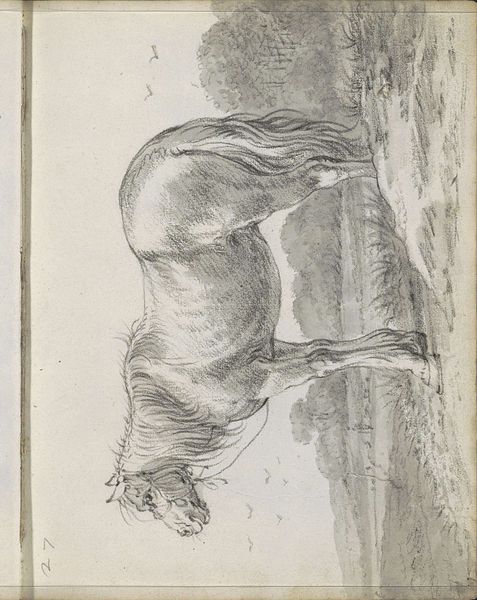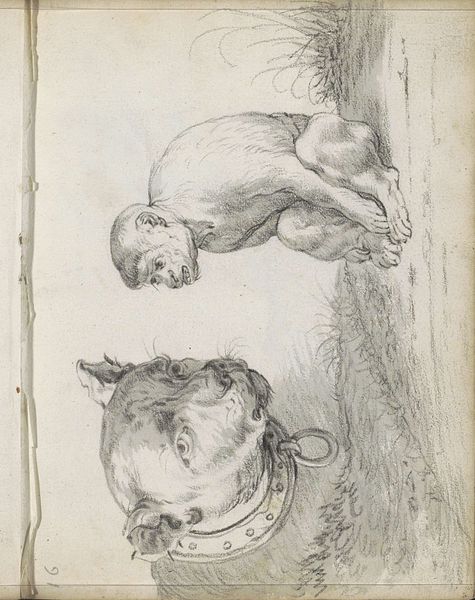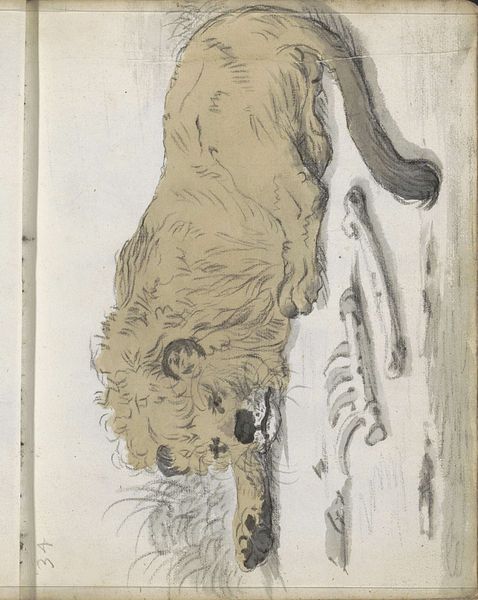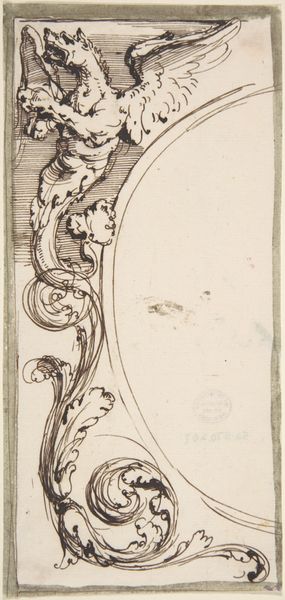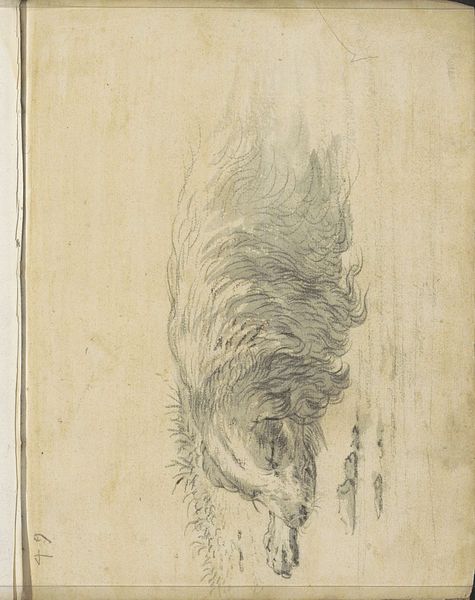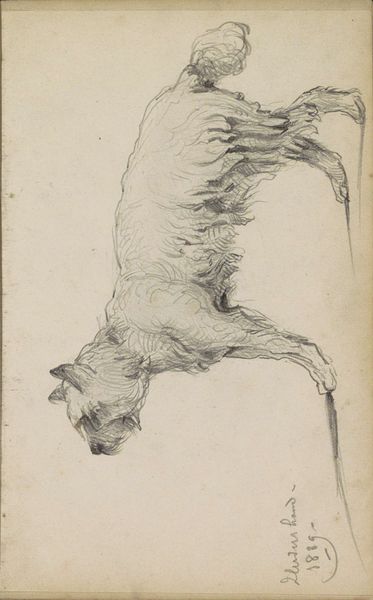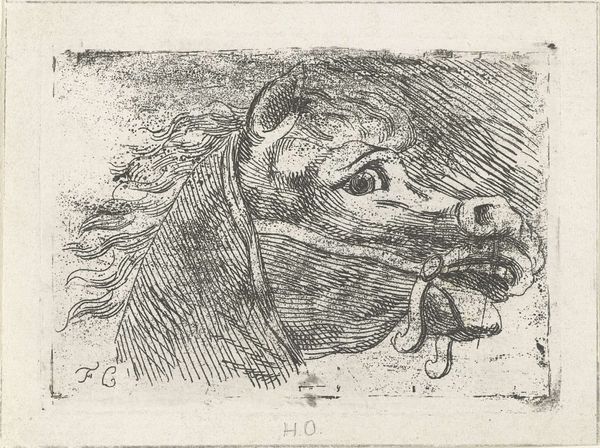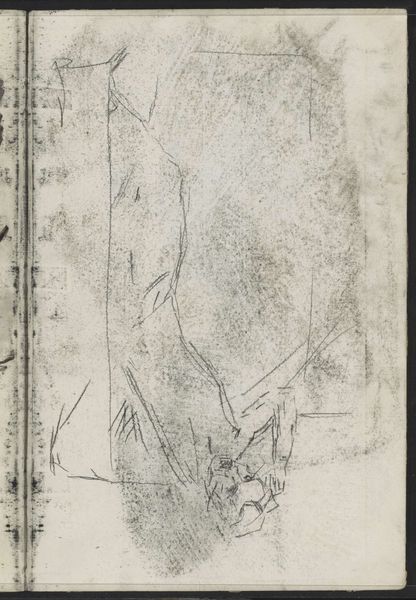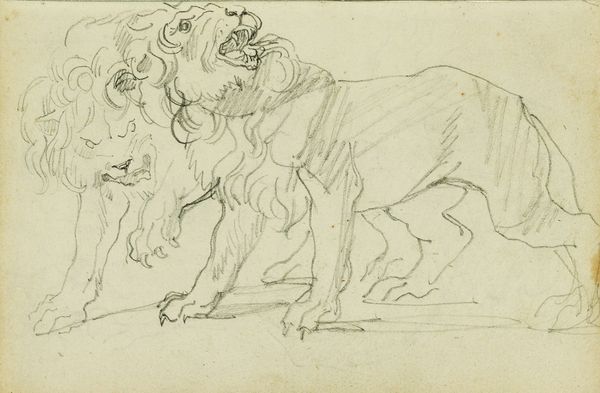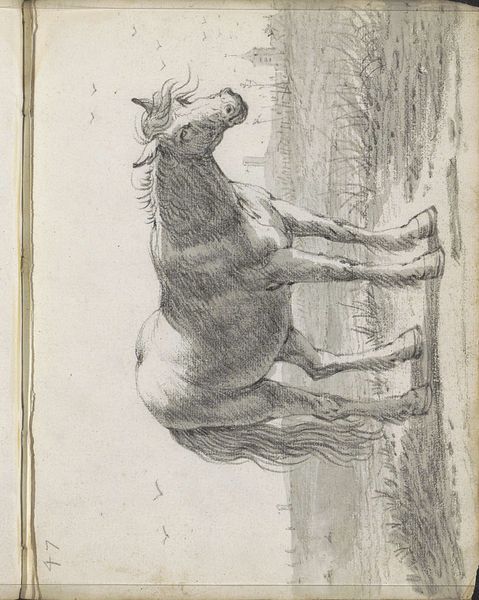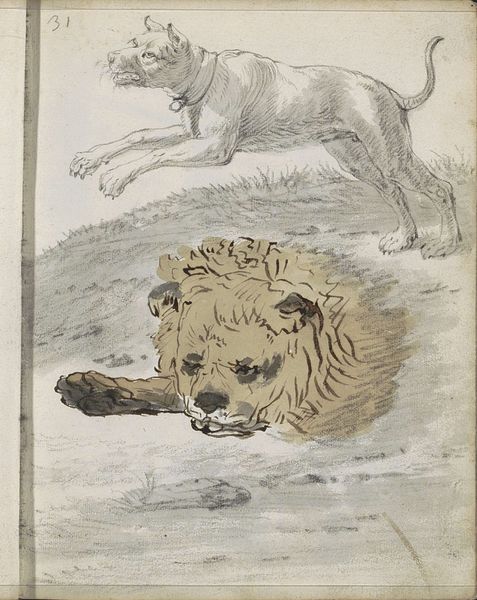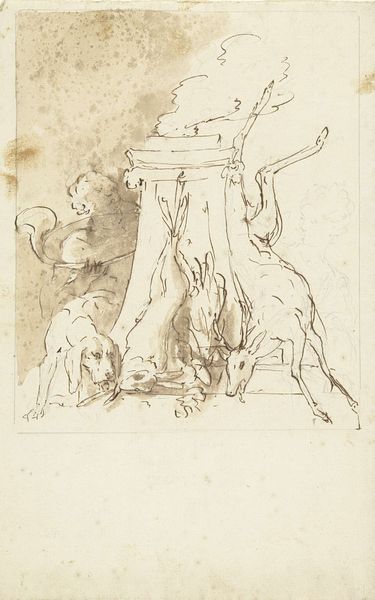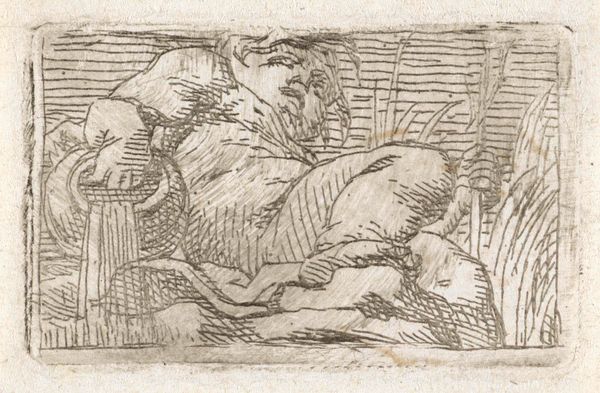
drawing, pencil, charcoal
#
drawing
#
animal
#
dutch-golden-age
#
pencil sketch
#
landscape
#
charcoal drawing
#
figuration
#
pencil
#
charcoal
#
realism
Copyright: Rijks Museum: Open Domain
Editor: Here we have "Liggende leeuw," or "Reclining Lion," a drawing in pencil and charcoal by Cornelis Saftleven, created in 1666. I find its softness really striking. The lion seems almost melancholic. What do you see in this piece, especially considering the time it was made? Curator: What strikes me is the tension between realism and symbolic representation. Lions, historically, are potent symbols of power, royalty, and even divinity, often associated with masculine authority. Yet, here, Saftleven depicts the lion in repose, almost vulnerable. How does this subversion of traditional symbolism speak to broader social or political undercurrents of the Dutch Golden Age? Was Saftleven commenting on the shifting power structures? Perhaps questioning established hierarchies through this gentle depiction of a creature typically associated with dominance? Editor: That’s fascinating! I hadn’t thought about the lion as a commentary on power. Is it unusual to see animals depicted this way during this period? Curator: While animal studies were common, it's the lion’s *demeanor* that stands out. Think about the broader context. The Dutch Golden Age was a time of burgeoning trade, but also of stark social inequalities. By portraying this symbol of strength in a moment of rest, perhaps Saftleven invites us to reflect on the illusion of absolute power. Editor: So the art encourages a more nuanced perspective. I will definitely remember that context going forward. Thanks. Curator: Precisely! By viewing this through an intersectional lens, we gain richer insights not only into the artwork itself but also into the society that produced it.
Comments
No comments
Be the first to comment and join the conversation on the ultimate creative platform.
